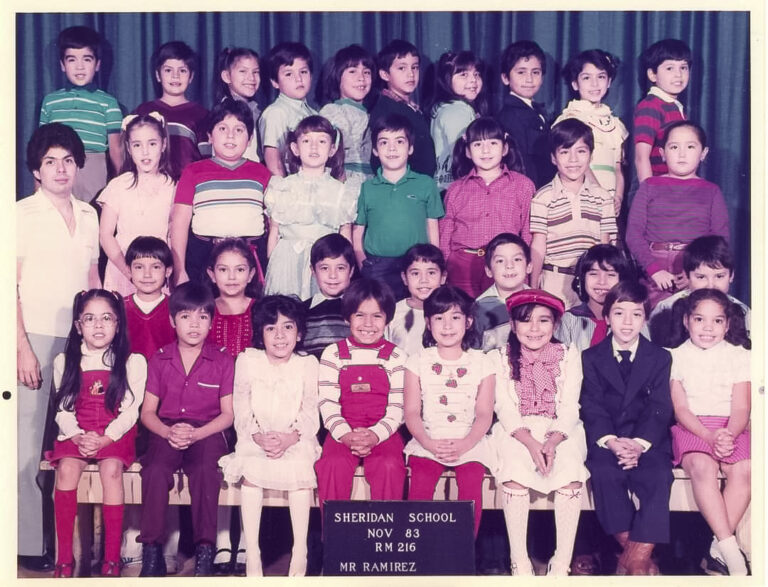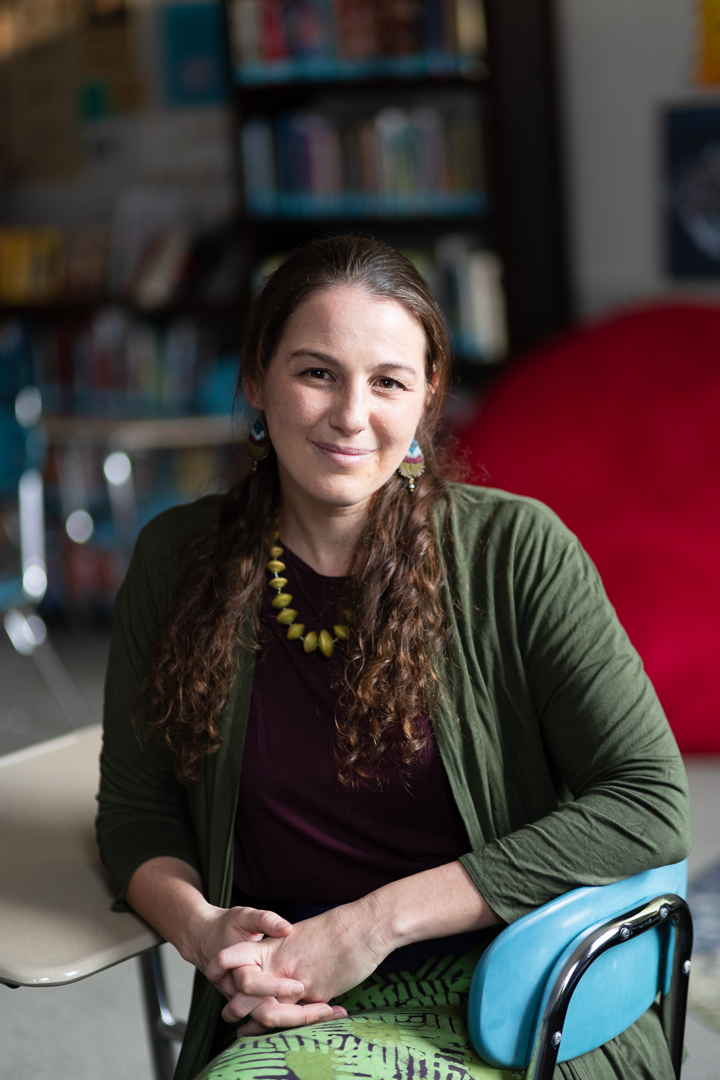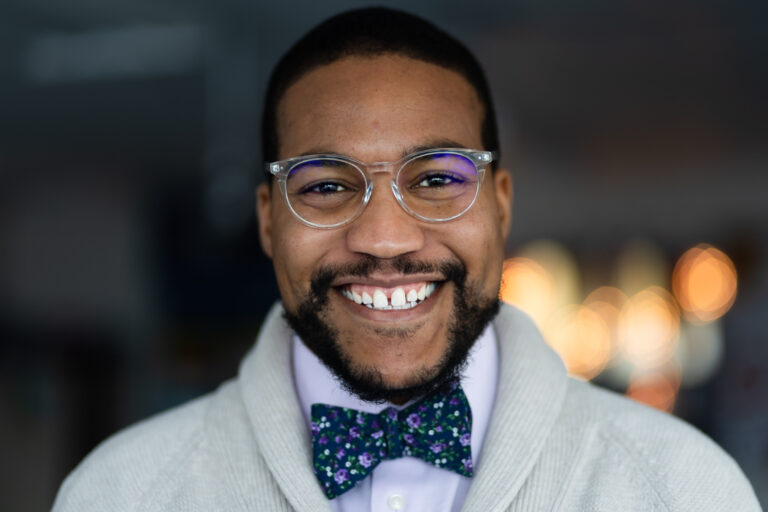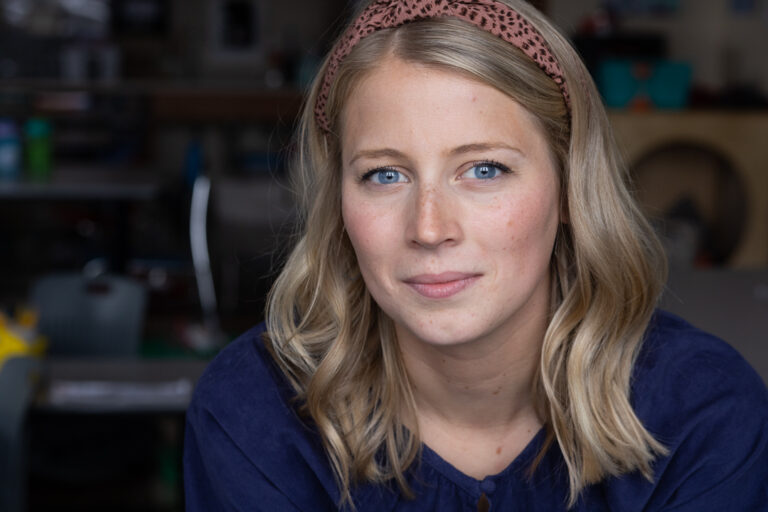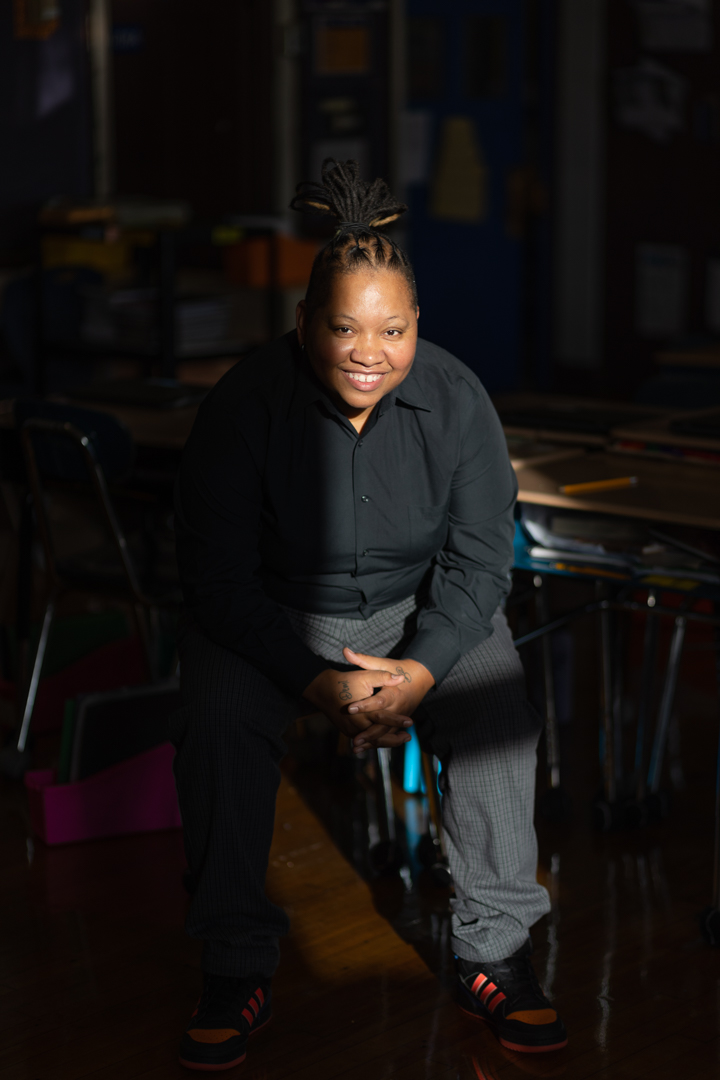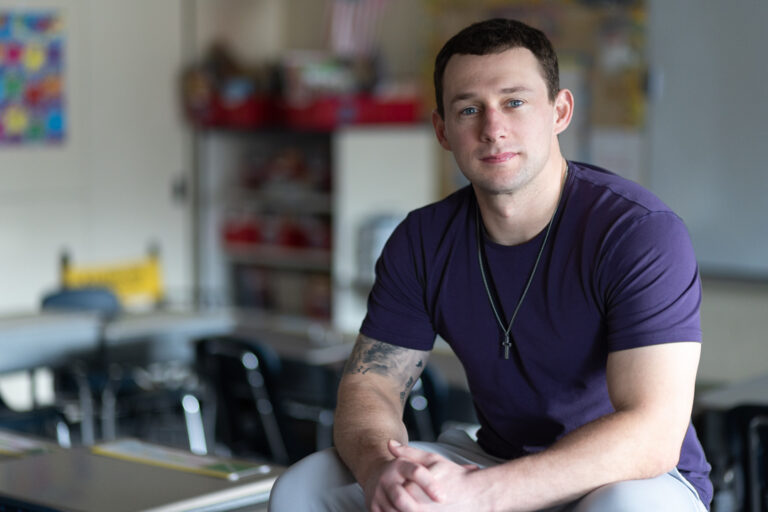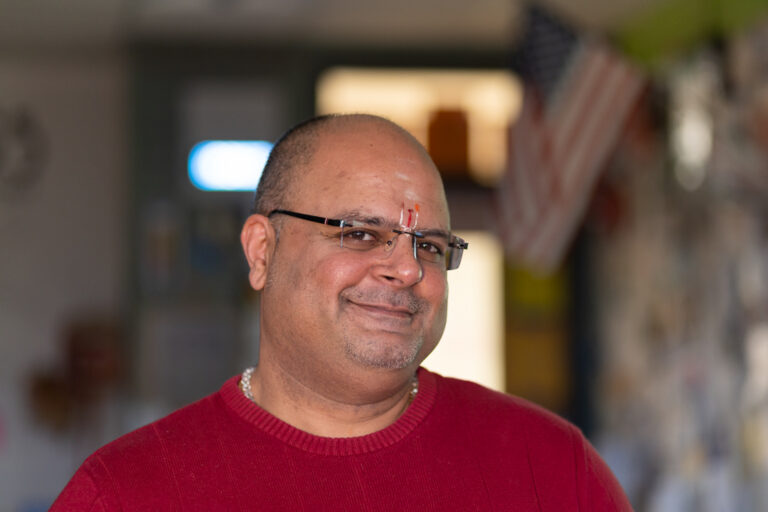Stories and videos where teachers discuss why they went into teaching. These interviews all cover the topic “why I became a teacher.”
It's hard to view my career in stories. Maybe it's not even my story. Maybe it’s the story of my dad.
I grew up in South Chicago. My dad was a preschool teacher. And everywhere we went, it was like, ‘El maestro, el maestro!’ And so that made me a celebrity by extension: la hija del maestro.
Because we don't have art in our building, I actually have an easel and paint in the back of my classroom. The kids come in for breakfast, they see me painting.
It was about the third classroom I walked into that I saw a distinct pattern. It was in the written instructions that the teacher would leave for me. It's called the sub plans. And at the bottom of all the sub plans was always a list of students' names.
And above that list of names was a title.
And that title said, “Problem students.”
I have the honor and joy of teaching U.S. history and civics to recent immigrant and refugee students. My students come from more than 30 countries: from Colombia, to the Democratic Republic of the Congo, to Cambodia. Most of my students have been in the U.S. for less than five years.
I went to school to be a journalist. My financial aid package required that I take on a work-study job. So during my first year of school, I worked with Jumpstart, an AmeriCorps program where they put college kids in Title I preschools.
I wanted to work at the Boston Federal Reserve and go to the London School of Economics. But I graduated in 2009, and there were no jobs available, due to the housing crisis and Great Recession. So I started working at a local public charter school.
I was pretty close with my brother. He ended up going to jail when I was in fourth grade. We were having morning meeting at school, and the question that day was, ‘How are you feeling?’
I was working at The Bridge Home at St. Mary's Women and Children's Center. It’s a shelter for infants to 12-year-olds. If the Department of Child and Family Services pulled a kid from their home, we housed and counseled them.
The bulk of my fifth graders are just excited to see me. They want to talk to you in their downtime. They want to sit by you at lunch, and they want you to come to recess with them. That feeling is the driving force that made me become a teacher.
I grew up in Oak Park in the 1980s. People were all about the melting pot. The idea was that everyone is the same and nobody looks different — we're all part of this collective homogenous blob. One of the drawbacks to that was that I was never really seen.
